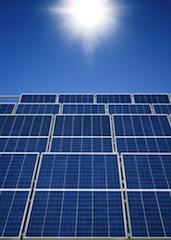Electricity: Who’s the Cleanest of Them All?
Quiz: Brazil, Canada, Germany or US: Which major country performs best when using renewable sources?
January 11, 2014

Many consumers turn on an efficient lightbulb, boot up an energy-saving computer or even plug in an electric car without realizing one key fact: Much of the power they are using is generated by coal or other fossil fuels, even if the end user isn’t polluting.
We wonder: Which of these major countries performs best when it comes to producing its electricity from renewable sources?
A. United States
B. Germany
C. Canada
D. Brazil
A. United States is not correct.
Less than 13% of the electricity produced in the United States in 2012 came from renewable sources. Just over half of that was from hydroelectric sources, a quarter from wind power — and the remainder from bioenergy, solar and geothermal sources.
Globally, about 20% of electricity comes from renewable sources, according to the International Energy Agency (IEA). This means that the United States is significantly below the global average.
In contrast, China — the United States’ chief economic rival — generated about 20% of its electricity from renewable sources in 2012. More than four-fifths of China’s renewable electricity came from hydroelectric sources.
Despite the political contentiousness of setting national targets for renewable energy use, individual U.S. states — led by Texas and California — have taken the lead by adding significant renewable energy capacity in recent years.
The U.S. power-generating industry itself is split on renewables. Some utility companies — especially those with large sunk investments in fossil-fuel power generating plants — view renewables as a threat to their traditional business. Others are seeking ways to adapt their business model to changing consumer preferences and sustainability requirements.
B. Germany is not correct.
As recently as 2000, only 6.3% of Germany’s electricity was generated from renewable sources. By 2012, the share of renewables had increased to nearly 25%, well above the global average.
In 2010, the German government passed laws that essentially require the de-carbonization of the German economy. The legislation set ambitious targets for electricity from renewables — 35% by 2020, 50% by 2030 and 65% by 2040. By 2050, the country expects to get 80% of the electricity it consumes from renewable sources.
The IEA defines renewable energy as energy derived from natural processes — such as sunlight and wind — that are replenished at a faster rate than they are consumed. Solar, wind, geothermal, hydro and biomass are all common sources of renewable energy.
C. Canada is not correct.
Much of the environmental news out of Canada is focused on the country’s controversial production of oil from tar sands.
As far as the country’s own electricity supply is concerned, the news is decidedly better. About 63% of it comes from renewable sources — almost all of it from the country’s abundant hydroelectric power sources.
In 2010, on a global basis, almost 18% of all energy consumed in its final form was electricity. Thus, independent of efforts to increase the share of renewables in electricity production, vast efforts will be needed to de-carbonize the other forms of energy consumption to the maximum extent possible.
D. Brazil is correct.
The world’s seventh-largest economy, Brazil surpasses the other major countries by a vast margin in terms of the percentage of electricity it derives from renewable sources. Overall, about 82% of Brazil’s electricity comes from renewables, with hydroelectric accounting for nine-tenths of that.
According to the IEA, achieving the goal of halving global energy-related emissions of carbon dioxide (CO2) by 2050 will require a doubling of renewable energy generation from today’s levels by 2020.
Since hydroelectric power sources are largely tapped out, much of this shift has to be achieved by boosting capacity to generate power from wind, solar and other renewable sources.
This option is especially attractive for the United States, which has an abundance of open space in which to locate wind and solar farms, thus allowing it to catch up rapidly.
Wind power accounted for 43% of the overall increase in installed power generating capacity in the United States in 2012, according to a recent report by the U.S. Department of Energy.
Editor’s note: This quiz was featured as a segment on the Marketplace Morning Report with David Brancaccio on January 3, 2014. You can stream the audio of the segment here.
Takeaways
Globally, about 20% of electricity comes from renewable sources, according to the International Energy Agency.
By 2050, Germany expects to get 80% of the electricity it consumes from renewable sources, up from 6.3% in 2000.
In 2010, on a global basis, almost 18% of all energy consumed in its final form was electricity.
90% of Brazil’s renewable electricity is generated from hydro power from its many rivers.
Wind power accounted for 43% of the overall increase in installed power generating capacity in the US in 2012.
Author
The Globalist
Read previous

America’s 50-Year War on Poverty
January 10, 2014